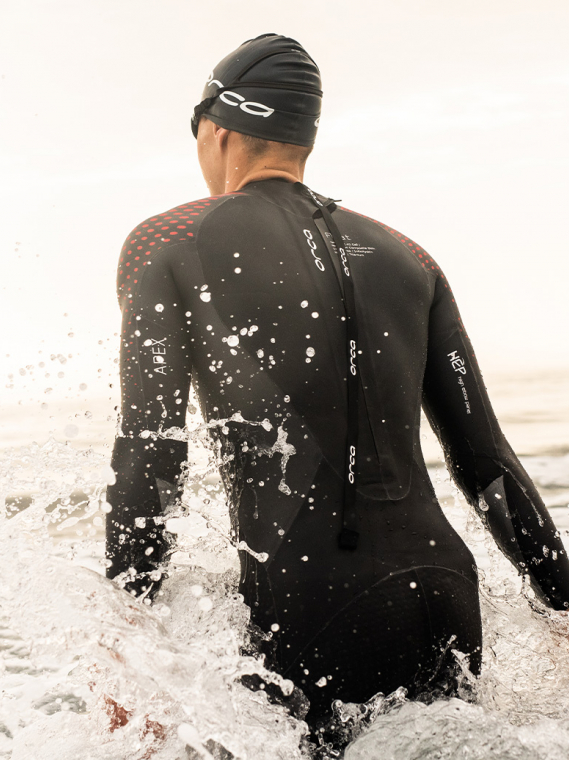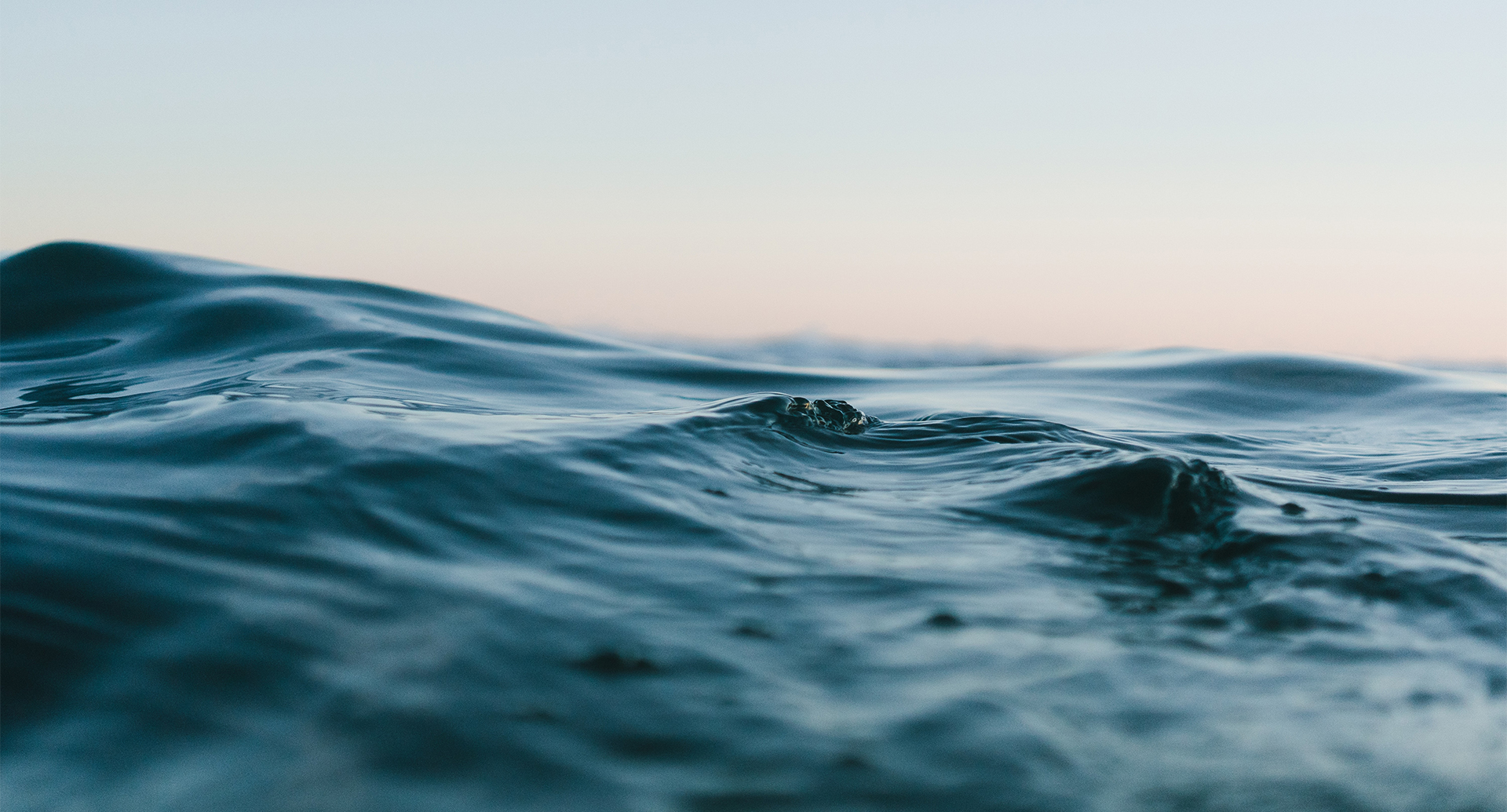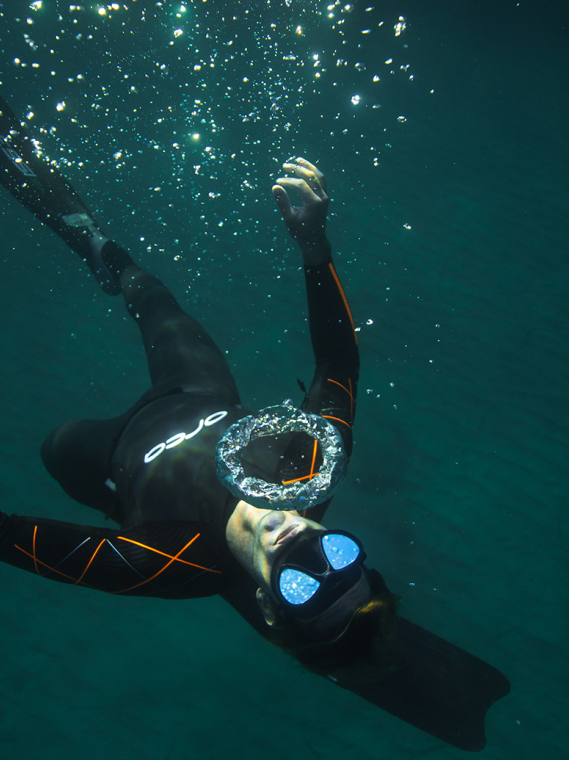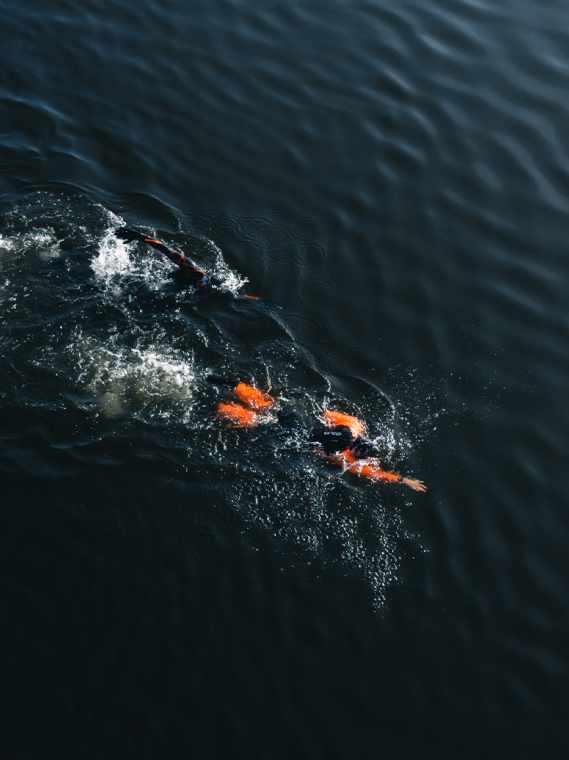
Emotional intelligence, the key to athletic performance?
The ironminds
March 28, 2022
In 2010 at the Ironman World Championship, eventual winner Chris McCormack was being hunted by Andreas Raelert who was getting closer and closer in th...
What does it mean to be a swimmer in natural waters or what is known as a wild swimmer? This was the question posed by Kate Moles and Charlotte Bales, lecturers and researchers in sociology at Cardiff University, and it led to their study, Suspended and i

Kate and Charlotte are sociologists working at Cardiff University. Their research explores the multisensory worlds of wild swimming, the ways swimmers understand wellbeing, joy and risk in the water and the bonds that are created and sustained through these encounters. Here, they share a small part of their project with us.
Kate Moles and Charlotte Bates – Sociologists at Cardiff University, UK
A group of women meet two or three times a week to brave the Norfolk sea, negotiating when to fit it in around their lives and the weather. They found each other, as a group of swimmers, three years ago and since then have swum together almost every week. Sometimes the weather gets in the way, and lockdown restrictions made it harder, but the draw of the water and the exhilaration of the swim pulls them back together. Separately in their cars, they arrive ready – wetsuits on – with only hoods and socks to pull on before heading straight into the sea, though one often lags behind, adjusting goggles, checking everything is packed away ready for the cold re-emergence onto land. Their time in the water and their friendship pulls together and strengthens each facet of their lives. Aged between 68 and 79 years of age, this group of women are year-round outdoor swimmers.

Photographs taken by Wendy on a disposable waterproof camera as part of the project.
Anthea and Norma come for a ‘proper’ swim; ‘up and down’, fully immersed. Liz and Wendy ‘jump up and down’, reluctant to put heads under and experience the full chill. Wearing wetsuits, hoods, gloves and socks has changed their relationship with the cold, it is no longer a barrier but now a part of the whole experience. Their kit – ‘we wear everything’ – allows them to stay in longer, to swim and feel the glide, the pull, the catch. It opens up possibilities and forms new ways of being in the water and being together, extending the time that can be spent off land.
‘Gliding though the water, feeling powerful and efficient. Pushing strongly through the water which parts as my hands come together, then pull down, and I breathe in, and then kick my legs out together squeezing the water to propel me forwards. A short glide and I begin the stoke again.’

Photographs taken by Wendy on a disposable waterproof camera as part of the project.
POWERFUL, ALIVE AND CONNECTED
These women talk about how they are invigorated by their swims – ‘when you come out you feel like you could save the world’ – and it has formed a regular part of their daily lives. The ritual of packing their bags in preparation, meeting, swimming, and returning home to start other activities sets a rhythm for their days. Without the swim, the days lose that rhythm, and they talk about a restlessness and a yearning during times when they are unable to reach the sea. Together, they share the moments when their feet leave the sand and become immersed in the saltwater, no longer bound by the same rules of movement, pleasure and risk. With that comes a responsibility – they look out for each other and have come to know themselves in ways they would not have before. The water introduces new vulnerabilities, and you need to trust those you go in with. This group of women watch out for each other, they share the responsibility of care and reciprocate the moments of joyful adventure and laughter. They have grown to understand their acceptable levels of risk, to appreciate and respond to their own and each other’s moments of pleasure and pain. Sometimes the group shares the water with seals, enjoying the encounters though hoping it is curious young pups and not the older bulls – ‘we look like four seals anyway when they come to have a look’. They enjoy the water, the encounters with the wildlife and the other people on the beach. The swimming makes them feel powerful, alive and connected. The mental and physical benefits to these women are felt alongside the social connections, all bound together and important.
Pods of swimmers like these form because of this trust and shared set of values, because they understand what swimming together means and what it produces. There are new ways of being together formed through swimming – the liquid solidifies friendships, the fluidity makes the bonds hold firm. Their lives exist both on land and in the seas, intertwined existences that balance each other. Their swimming endures, through cold water, through challenges and disruptions. They do what they can to keep coming back to the sea, to be together in the waves, watching for each other and sharing the moments.

Photographs taken by Wendy on a disposable waterproof camera as part of the project.
THE SALTWATER ENDURES
Together they leave the water and walk back to the cliff top car park where they struggle out of wetsuits, pull off their kit and layer back on their dry clothes. Sometimes a chair is brought along to help the final pull out of the wetsuit and mats to stand on save feet from getting too cold. They could not swim alone, they explain, laughing, they need to help pull wetsuits off each other. As the weather improves, and the group of women gathering grows, they now bring deckchairs, hot drinks and homemade energy balls to enjoy afterwards. Then they leave separately and return to different lives and different activities, but the saltwater endures and always brings them back together. They go home, dry their kit in the different set ups they have each refined, and start planning the next visit to the water together.

Photographs taken by Wendy on a disposable waterproof camera as part of the project.
Swimming encounters like this happen, with nuance and variety, all around the world. In our research project on outdoor swimming in the UK, we are encountering the power of friendships made and strengthened through swimming together. We have met groups of swimmers who have, like the Norfolk Dippers, swum through the winter for the first time this year, lockdown offering an incentive to embrace something unfamiliar and removing the temptation of inside heated pools. We have joined swimmers on journeys they have done many times before – familiar, mundane, ritualistic – and on new ones – exciting, scary, disorientating. We have explored moments of joy, fear, discomfort and pleasure with our participants, at different times and in different waters, but the enduring qualities of the bonds forged in and through the water thread through all these encounters. Swimming in cold water – which is all UK water almost all of the time really – requires a special kind of comradery. It invites people to be vulnerable and brave, to open themselves up to the elements while wrapping themselves up in their friendships.

Photographs taken by Wendy on a disposable waterproof camera as part of the project.
ABOUT KATE MOLES AND CHARLOTTE BATES
Kate Moles and Charlotte Bates are sociologists working at Cardiff University, UK. Kate enjoys sea swimming and Charlotte likes to dip in rivers and lakes.

March 28, 2022
In 2010 at the Ironman World Championship, eventual winner Chris McCormack was being hunted by Andreas Raelert who was getting closer and closer in th...

May 10, 2021
Olivier Courret is the founder of Mind Your Brain. He is a Certified Clinical Hypnotherapist, Mental Coach, NLP master, 3 times triathlon Asia age gro...

March 29, 2021
Like so many of us I’ve always loved the water, some of my earliest childhood memories involve splashing about in the waves with my family in Sidmouth...